
Ruthenia is an exonym, originally used in Medieval Latin, as one of several terms for Kievan Rus'. It is used to refer to Rus' region, a triangular area which mainly corresponds to the tribe of Polans in Dnieper Ukraine. It is also used to refer to the East Slavic and Eastern Orthodox people of the Grand Duchy of Lithuania and the Kingdom of Poland, and later the Polish-Lithuanian Commonwealth, mainly to Ukrainians and sometimes Belarusians, corresponding to the territories of modern Belarus, Ukraine, Eastern Poland and some of western Russia.

Ruthenian and Ruthene are exonyms of Latin origin, formerly used in Eastern and Central Europe as common ethnonyms for East Slavs, particularly during the late medieval and early modern periods. The Latin term Rutheni was used in medieval sources to describe all Eastern Slavs of the Grand Duchy of Lithuania, as an exonym for people of the former Kievan Rus', thus including ancestors of the modern Belarusians, Rusyns and Ukrainians. The use of Ruthenian and related exonyms continued through the early modern period, developing several distinctive meanings, both in terms of their regional scopes and additional religious connotations.
Transcarpathia is a historical region on the border between Central and Eastern Europe, mostly located in western Ukraine's Zakarpattia Oblast, with smaller parts in eastern Slovakia and the Lemko Region in Poland.
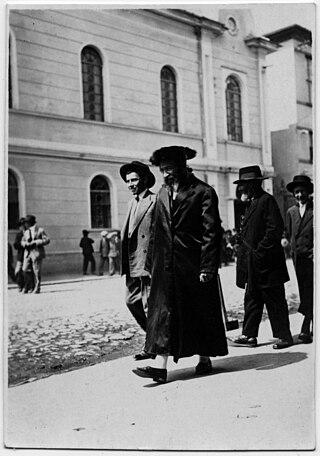
Jews settled in this small region variously called Ruthenia, Carpathian Ruthenia, Sub-Carpathian Ruthenia or simply Transcarpathia as early as the 15th century. Local rulers allowed Jewish citizens to own land and practice many trades that were precluded to them in other locations. Jews settled in the region over time and established communities that built great synagogues, schools, printing houses, businesses, and vineyards. By the end of the 19th century there were as many as 150,000 Jews living in the region.

Carpatho-Ukraine or Carpathian Ukraine was an autonomous region, within the Second Czechoslovak Republic, created in December 1938 and renamed from Subcarpathian Rus', whose full administrative and political autonomy had been confirmed by constitutional law of 22 November 1938.
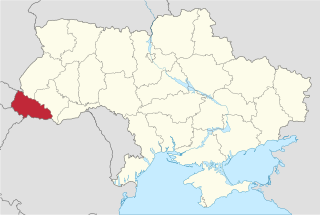
Zakarpattia Oblast, also referred to as simply Zakarpattia or Transcarpathia in English, is an oblast located in the Carpathian Mountains in west Ukraine, mostly coterminous with the historical region of Carpathian Ruthenia. Its administrative centre is the city of Uzhhorod. Other major cities within the oblast include Mukachevo, Khust, Berehove, and Chop, the last of which is home to railroad transport infrastructure.

Uzhhorod is a city and municipality on the Uzh River in western Ukraine, at the border with Slovakia and near the border with Hungary. The city is approximately equidistant from the Baltic, the Adriatic and the Black Sea (650–690 km) making it the most inland city in this part of Europe. It is the administrative center of Zakarpattia Oblast (region), as well as the administrative center of Uzhhorod Raion (district) within the oblast. Population: 115,449.
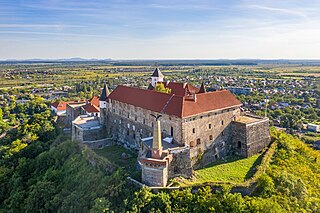
Mukachevo is a city in Zakarpattia Oblast, western Ukraine. It is situated in the valley of the Latorica River and serves as the administrative center of Mukachevo Raion. The city is a rail terminus and highway junction, and has beer, wine, tobacco, food, textile, timber, and furniture industries. During the Cold War, it was home to Mukachevo air base and a radar station.

Rusyns, also known as Carpatho-Rusyns, Ruthenians, or Rusnaks, are an East Slavic ethnic group from the Eastern Carpathians in Central Europe. They speak Rusyn, an East Slavic language variety, treated variously as either a distinct language or a dialect of the Ukrainian language. As traditional adherents of Eastern Christianity, the majority of Rusyns are Eastern Catholics, though a minority of Rusyns practice Eastern Orthodoxy. Rusyns primarily self-identify as a distinct Slavic people and they are recognized as such in Croatia, Hungary, Poland, Romania, Serbia, and Slovakia, where they have official minority status. Alternatively, some identify more closely with their country of residence, while others are a branch of the Ukrainian people.

The coat of arms of Ukraine is a blue shield with a golden trident. It is colloquially known as the tryzub.

The Rt Rev. Avgustyn Ivanovych Monsignor Voloshyn , also known as Augustin Voloshyn, was a Carpatho-Ukrainian politician, teacher, essayist, and Greek Catholic priest of the Mukacheve eparchy in Czechoslovakia.
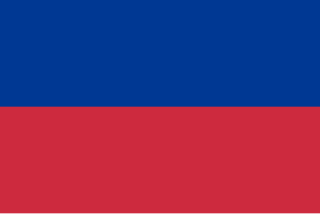
Carpathian Ruthenia was a region in the easternmost part of Czechoslovakia that became an autonomous region within that country in September 1938. It declared its independence as the "Republic of Carpatho-Ukraine" in 15 March 1939; however, it was occupied and annexed by Hungary the same day. Starting with October 1944, the Soviet Red Army occupied the territory and short period the territory of the region was organised as Transcarpathian Ukraine (1944—1946), until it was incorporated into the Ukrainian Soviet Socialist Republic in 1946. In total, between 1939 and 1944, 80,000 Carpathian Ukrainians perished.

The coat of arms of Czechoslovakia were changed many times during Czechoslovakia’s history, some alongside each other. This reflects the turbulent history of the country and a wish to use appropriate territorial coats of arms.
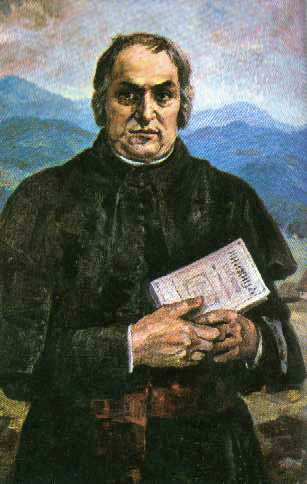
Alexander Vasilyevich Dukhnovych was an Transcarpathian Ruthenian priest, poet, writer, pedagogue, and social activist of the Russophile orientation. He is considered as the awakener of the Rusyns.
Liuta, also Ljuta is a small village located in the Uzhhorod Raion of Zakarpattia Oblast of Ukraine.

The Carpatho-Rusyn Society is a non-profit cultural organization located in the United States dedicated to promoting Carpatho-Rusyn culture and history. It was established in Pittsburgh in 1994 and is the largest exclusively Carpatho-Rusyn organization in North America with over 3,000 members.
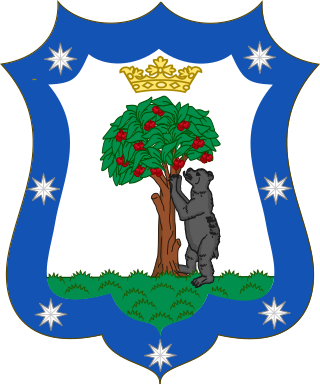
The bear as heraldic charge is not as widely used as the lion, boar or other beasts.

Dmytro Dmytrovych Sydor is a Rusyn archpriest of the Cathedral of Christ the Saviour in Uzhhorod. The cathedral belongs to the Ukrainian Orthodox Church.

SC Rusj Užhorod or SC Rusz Ungvár is a former Czechoslovak and Hungarian club that was created in 1925–26 out of Magyar AC (1908). Ukrainian club Hoverla Uzhhorod later traced its heritage from this club indicating 1925 on its club's crest as the year of its foundation.

Elections for deputies to the Czechoslovak parliament from the Užhorod electoral district were held on 16 March 1924. Nine members of the Chamber of Deputies and four senators were elected.


























